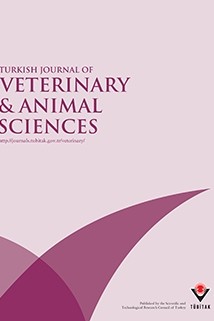
Turkish Journal of Veterinary and Animal Sciences
Yazarlar: JELENA APIC, SLOBODANKA VAKANJAC, IVAN STANCIC, IVAN RADOVIC, STOJA JOTANOVIC, ZDENKO KANACKI, BRANISLAV STANKOVIC
Konular:-
Anahtar Kelimeler:Artificial insemination,Dose,Fertility,Number,Sow,Spermatozoa,Volume
Özet: The aim of the present study was to investigate the possibility of increasing boar's reproductive exploitation by using AI doses of doubly reduced volume and sperm count in the intrauterine AI procedure. The experiment was conducted at a commercial pig farm in Serbia in 2014. Classic intracervical insemination (ICI) was performed by using 50 mL or 100 mL volume doses containing 4 Ã 109 or 2 Ã 109 progressively motile spermatozoa. The same volumes and sperm numbers per dose were used with intrauterine insemination (IUI). Each dose combination was used to inseminate 30 sows. Intrauterine insemination with AI doses of reduced volume (50 mL) and sperm count (2 Ã 109) did not produce a statistically significant difference (P < 0.05) in the farrowing rate (76.7%) as compared with 4 Ã 109 spermatozoa in the same volume (83.3%) or with insemination by doses of 100 mL with a 2 Ã 109 (83.3%) or a 4 Ã 109 sperm count (86.7%). The number of live-born piglets (10.82) was larger following IUI using a 50 mL volume dose with a 2 Ã 109 sperm count as compared with ICI with the same AI dose volume and sperm count (9.85). The results show that the use of reduced AI dosages provides an opportunity for the swine industry to considerably exploit the reproductive potential of genetically superior boars.